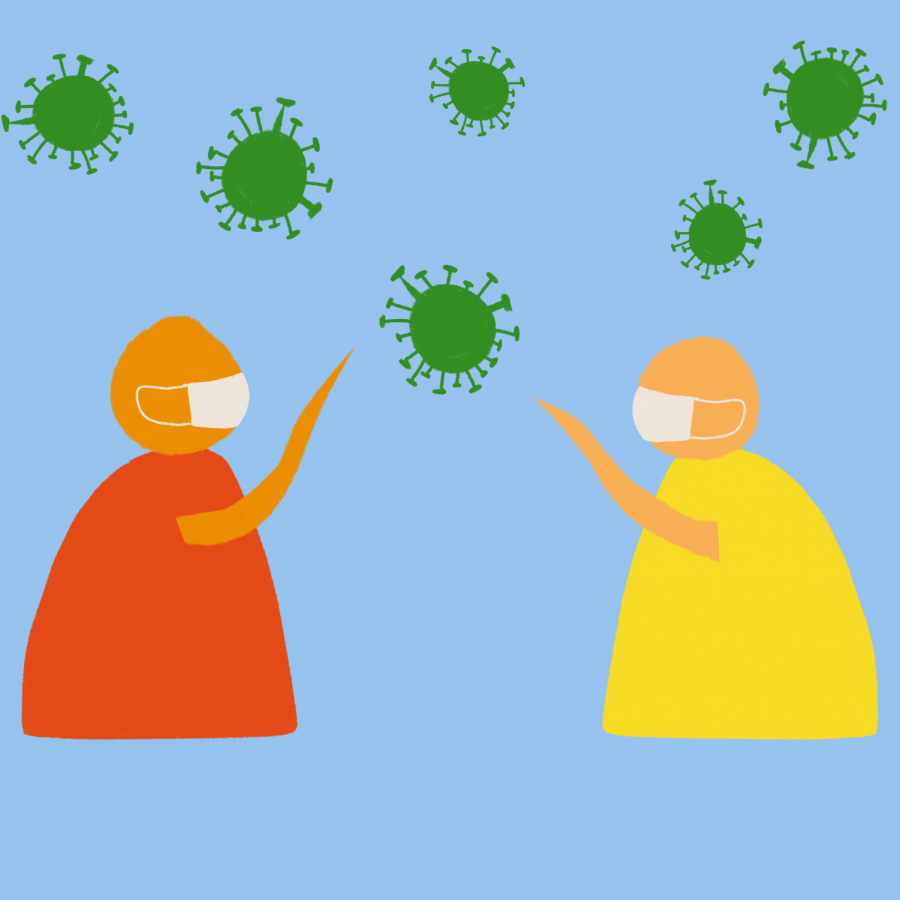Opinion | Social distancing is not over
June 16, 2020
Allegheny County moved into the green phase of reopening on June 5, which allowed restaurants and bars, gyms and salons to open at half capacity or less, among other eased restrictions. But large gatherings are still prohibited, and masks and social distancing are still encouraged.
COVID-19 infection rates are stable in 11 states and rising in 20. In the remainder of the states — less than half — the infection rate is decreasing. Pennsylvania is one of these states. But Pennsylvania was also one of the last states to reopen, which means that it’s likely too soon to see the green phase’s effects on viral spread. The states that are seeing upticks in infection rates are states that reopened earlier, which means that if we’re not careful, our state could see a rise in cases within the next few weeks.
This is all to say, COVID-19 isn’t over just because Allegheny County is in the green phase. In fact, some epidemiologists say the virus won’t rest until it has infected 60-70% of the American population. Right now, the infection rate in America is lower than 1%. One of the best mitigation techniques for COVID-19 is social distancing, which is keeping 6 feet away from anyone who isn’t part of your household unit. The green phase shouldn’t be interpreted as a go ahead to drop social distancing. Things opening up doesn’t mean that it’s safe to begin interacting with a wide circle of people again.
In many places, including Pittsburgh and New York — the latter of which had the worst outbreak in the United States — people seem to be throwing caution to the wind with social distancing. Carol A. Winner, a Masters of Public Health who works in community health, noted that people shouldn’t feel a false sense of security just because they see others breaking social distancing and not wearing masks.
“When we see people around us without masks or not adhering to social distancing guidelines, we think, ‘Maybe I don’t need to worry so much anymore.’” Winner said. “The numbers of new cases and deaths tell us of the dangers and that healthy behaviors need to continue to survive the virulence of this virus. We must continue to be extremely cautious.”
The safest way to interact with a person outside your household right now is to meet outside and stay 6 feet apart, epidemiologists say. But if you’re a low-risk individual — like many young people — and you want to expand your circle, experts recommend choosing a small circle of people to interact with, and choosing these people very carefully.
First, experts recommend having a conversation with the people you want to have close physical contact with. Ask simple questions such as, “Do you wear a mask in public?” Ask them how often they go to the store and other public spaces, who else they are in close contact with and if they are living with any high-risk individuals. Make sure the people you are in close contact with are trustworthy, and that they’ll tell you if they begin seeing more people, go back to work or make any other choices that put them at a higher risk of carrying the virus.
In Pennsylvania, the green phase means that gatherings of up to 250 people are permitted — but there aren’t any guidelines on these gatherings. The Centers for Disease Control continues to rank gatherings, especially gatherings where people don’t social distance or wear masks, as one of the highest risk situations for viral spread. This means house parties, even outside, are some of the most dangerous situations right now. Partying is not responsible, and it isn’t safe either.
And if data across the United States is showing us anything right now, it’s that many states reopened far too early, and that relaxing restrictions leads to an uptick in cases. This means that people shouldn’t necessarily be blindly trusting the guidelines of local government — especially if the guidelines feel too lax. If they feel too lax, then it’s likely that they are, indeed, too lax.
To be frank, there are some essential activities that make social distancing difficult or nearly impossible — grocery shopping on a Saturday, visiting the doctor or protesting — all of which are vital. This doesn’t mean that you cannot engage in essential activities. But this makes social distancing outside of essential activities such as these all the more important.
It’s true that social distancing is exhausting, that we want to spontaneously socialize again and drink with our friends in big groups. It’s true that many young adults who contract COVID-19 have mild symptoms — but this isn’t always the case. And regardless, we still have a larger role in the community. We interact with people who are elderly, people who are immunocompromised — even if they appear to be healthy.
This pandemic is far from over. We’ve got to do our part. We have to take care of ourselves socially, but responsibly. We have to continue social distancing.
Leah is the opinions editor, and she writes mostly about cumin, books and other life necessities. Write to her at [email protected].









